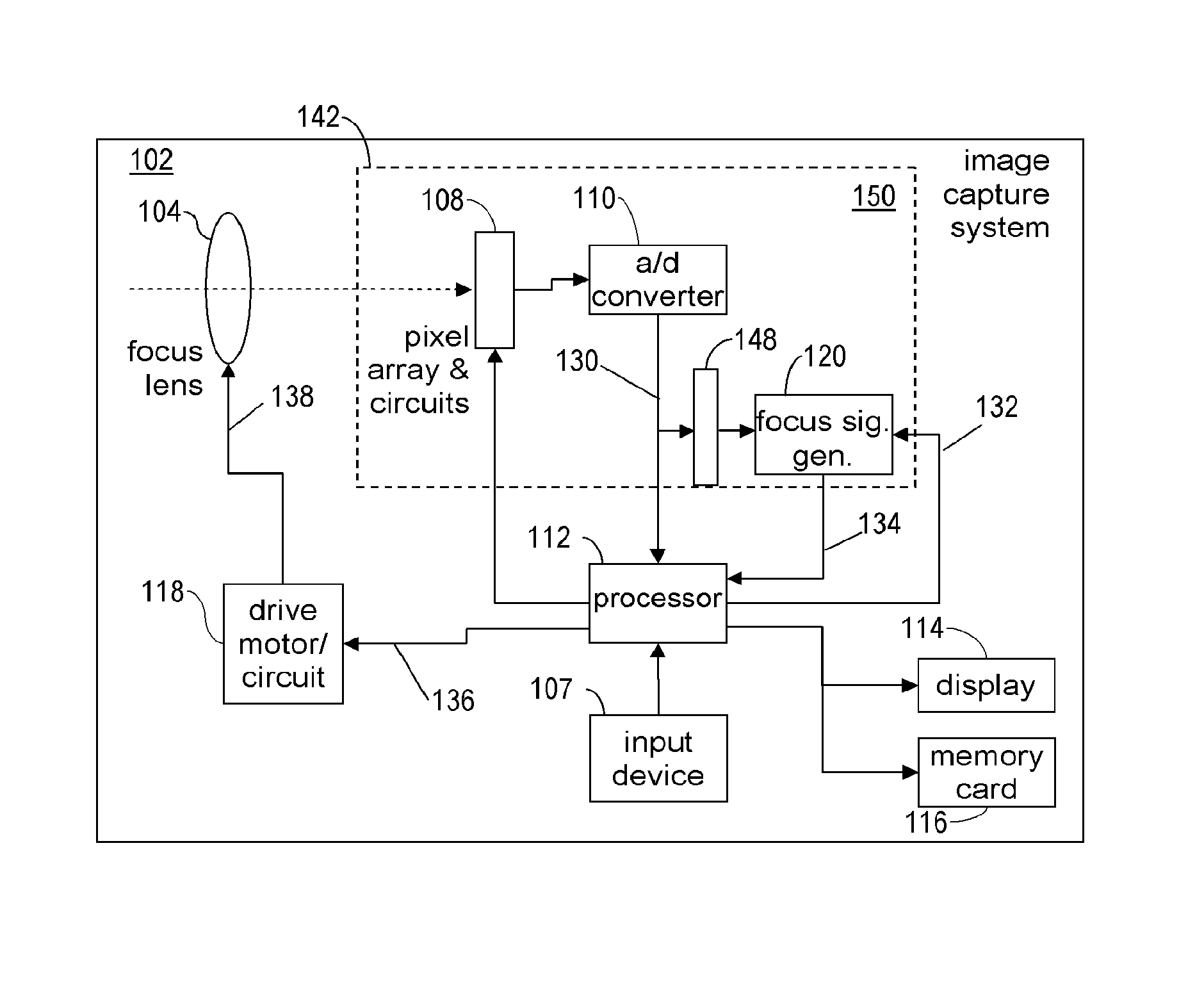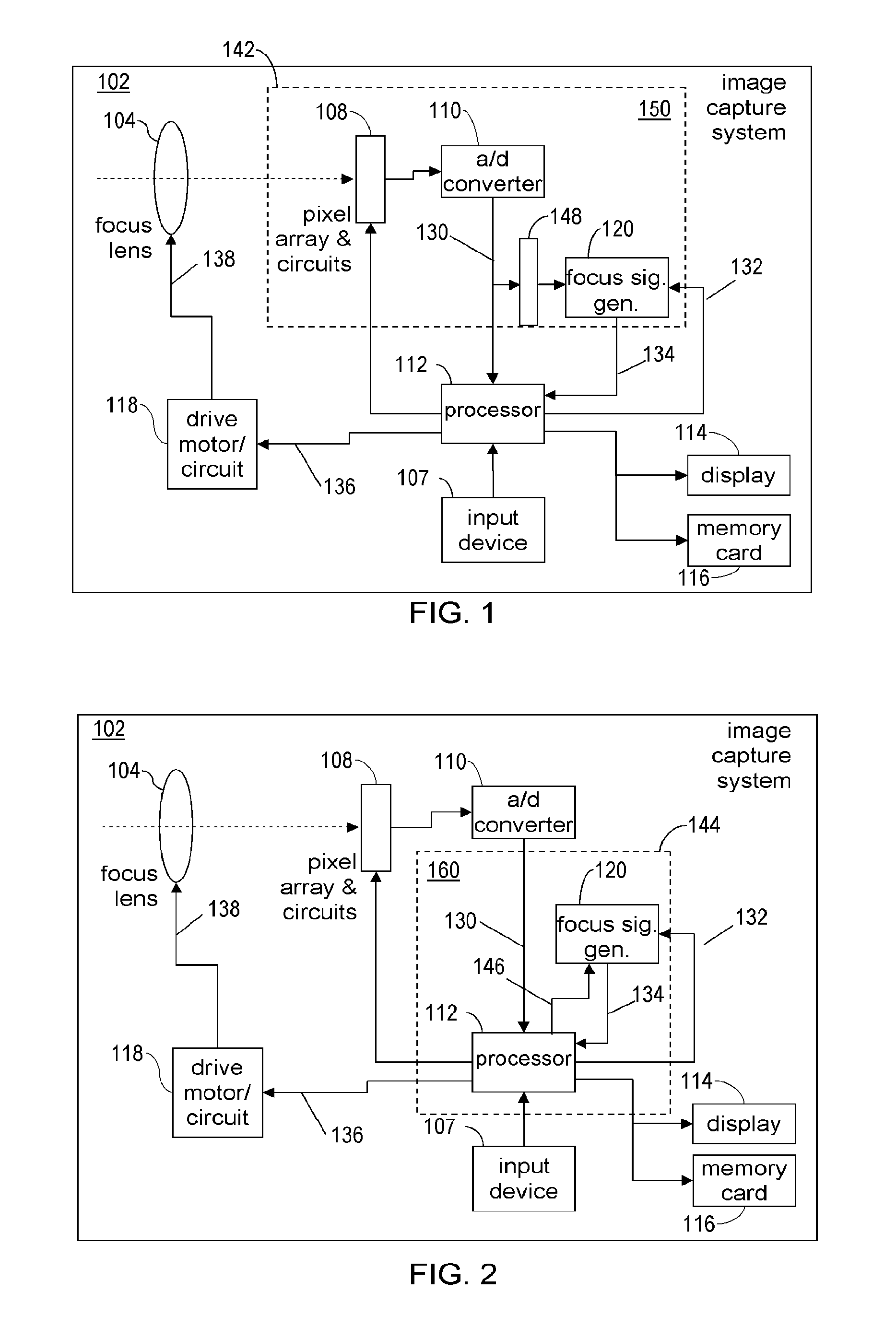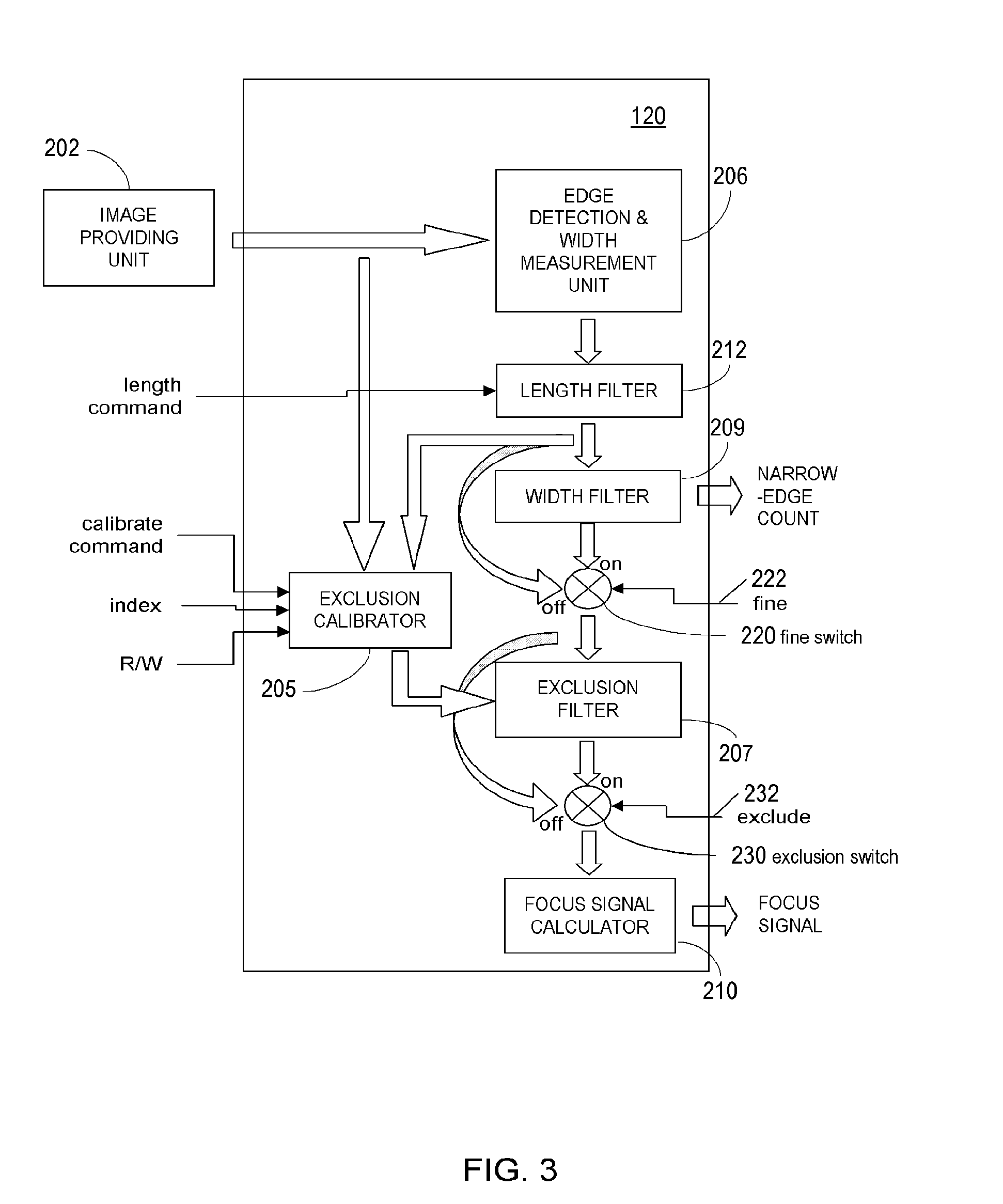Auto-focus image system
a technology of image system and autofocus, which is applied in the field of autofocus electronically captured images, can solve the problems of small detection point group, ineffective technique, and inconvenient contrast technique for motion video
- Summary
- Abstract
- Description
- Claims
- Application Information
AI Technical Summary
Benefits of technology
Problems solved by technology
Method used
Image
Examples
Embodiment Construction
[0080]Disclosed is an auto focus image system that includes a pixel array coupled to a focus signal generator. The pixel array captures an image that has at least one edge with a width. The focus signal generator may generate a focus signal that is a function of the edge width and / or statistics of edge widths. An auto focus image system that includes a pixel array coupled to a focus signal generator. The pixel array captures an image that has at least one edge with a width. The generator generates a focus signal that is a function of the edge width and various statistics of edge width. The generator may eliminate an edge having an asymmetry of a gradient of an image signal. The generator may also eliminate an edge that fails a template for an associated peaking in the gradient. A processor receives the focus signal and / or the statistics of edge widths and adjusts a focus position of a focus lens. The edge width can be determined by various techniques including the use of gradients. ...
PUM
 Login to View More
Login to View More Abstract
Description
Claims
Application Information
 Login to View More
Login to View More - R&D
- Intellectual Property
- Life Sciences
- Materials
- Tech Scout
- Unparalleled Data Quality
- Higher Quality Content
- 60% Fewer Hallucinations
Browse by: Latest US Patents, China's latest patents, Technical Efficacy Thesaurus, Application Domain, Technology Topic, Popular Technical Reports.
© 2025 PatSnap. All rights reserved.Legal|Privacy policy|Modern Slavery Act Transparency Statement|Sitemap|About US| Contact US: help@patsnap.com



